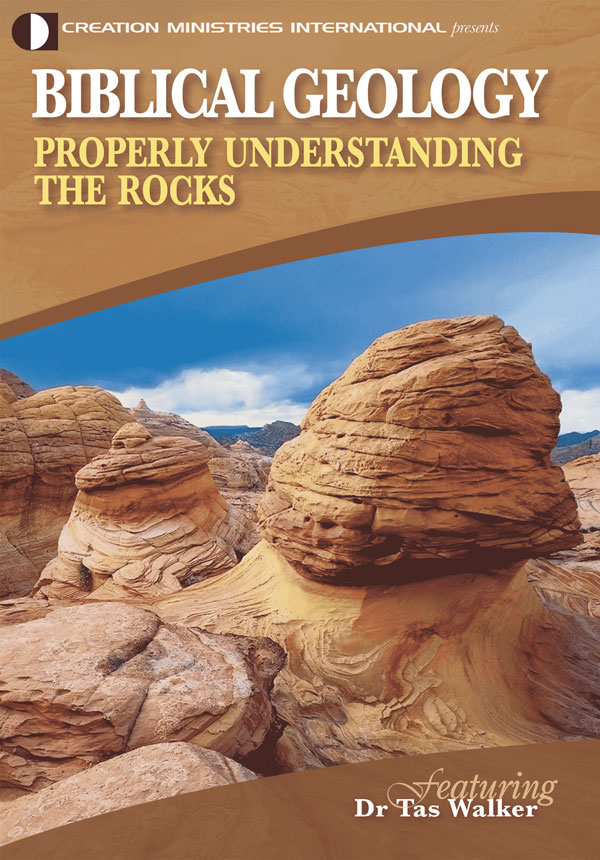Journal of Creation 37(3):9–10, December 2023
Browse our latest digital issue Subscribe
A new ‘marine crocodile’ discovery on the Jurassic coast of England
Fossil hunters working on the Jurassic coast of England discovered a new thalattosuchian fossil in 2017 (‘suchus’ is the Latinized form of the Greek ‘soukhos’; meaning crocodile). This extends the evolutionary narrative of this creature possibly back to the Late Triassic (Rhaetian) from the Early Jurassic. The account has recently been published in the Journal of Vertebrate Paleontology.1
Thalattosuchian fossils are sometimes referred to as extinct marine crocodiles, although they are not strictly classed with the Crocodylia. Instead, they are referred to as a clade of marine crocodylomorphs, although the phylogenetic narrative is equivocal. They are considered to be either members of Neosuchia (which includes modern crocodiles and other closely related fossil crocodylomorphs) or older members of Crocodylomorpha.2 Although the clade had a wide oceanic distribution, specimens have also been identified in freshwater settings.3
According to evolutionary theory, thalattosuchians and crocodylians are claimed to have transitioned from quadrupedal terrestrial animals (i.e. from sphenosuchians) in the Triassic. Dating has previously restricted the earliest extinct animals to the Early Jurassic / Early Cretaceous.
Two subgroupings have been ascribed to the clade: the Teleosauroidea and Metriorhynchoidea. Teleosauroids are similar to other crocodyliformes; they were not highly adapted to life in the ocean, and they possessed typical crocodile features such as tail osteoderms. The Metriorhynchidae are said to have been more highly adapted to survival in an oceanic environment—limbs were transformed into flippers, with smoother scaleless skin and the possession of a tail fluke.
New discovery
The new discovery, from the Charmouth Mudstone Formation, includes part of the head, backbone and limbs, and is sufficiently complete for it to be identified and named. It is said to be the only thalattosuchian from the early Jurassic Pliensbachian age (185 Ma).4 The name Turnersuchus hingleyae (figure 1) has been given after Paul Turner, who found the first fossils and donated the specimens to the Lyme Regis Museum (Dorset, England), and Lizzie Hingley, who prepared the find. Associates from the nearby Charmouth Heritage Coast Centre helped to piece the various fossils together.
Following this finding, it is now suggested that the Thalattosuchia evolved earlier, in the Late Triassic, although with limited supporting evidence—the notion that they lived prior to the Jurassic is based on time-calibrated phylogenetic analysis, which partly constrains dating by stratigraphy.1 Separately, a thalattosuchian skull has been discovered in a cave system in Morocco from rock layers dated to an age prior to the Pliensbachian.5 Evolutionary scientists therefore suggest that these latest finds are basal to both Teleosauroidea and Metriorhynchoidea. It is suggested that Turnersuchus is basal because it possesses fewer derived character states than the other known thalattosuchians. Thus, the evidence for it being basal is partly its morphology, but filtered through phylogenetic analysis.1 The lack of further fossil evidence from the Late Triassic would imply, from an evolutionary perspective, that there is a ‘ghost lineage’ of yet-to-be-discovered fossils.
The closest modern crocodilian form is the gharial (family Gavialidae) (figure 2), which has a long, slender snout for catching and eating fish, and today lives in rivers of the Indian subcontinent. Although some similarities are evident, the researchers have claimed the shape of the Turnersuchus skull is notably different from the modern form, and that it is only distantly related to modern crocodiles.
The shape of the supratemporal fenestrae in the skull suggests it had a powerful and fast-biting action to help catch its prey of fish and cephalopods. Like modern crocodiles, this may have helped with the temperature regulation of the animal’s brain. The further speculation is that the 2-metre-long Turnersuchus found in the Charmouth Mudstone Formation gave birth to live young, and so was not an egg layer as are modern crocodiles, although this is a claim that is unsupported by evidence.4
There is further evidence that the animals were already perfectly adapted to life in their environment. High resolution studies of the inner ear vestibular system of 18 pelagic thalattosuchian skulls (i.e. the metriorhynchoids, but not Turnersuchus), using computed tomography (CT), reveal a compact thickened, and reduced bony labyrinth, which closely resembles that of other marine reptiles, and even whales.6,7,8 These animals, that lived in the open ocean, were already well suited to their environment. The semi-aquatic teleosauroids had labyrinths similar to modern crocodylians.
Discussion and summary
This is an interesting find of another vertebrate fossil along the Jurassic Coast. This coast is famous for finds by Mary Anning, and other 19th-century geologists, of plesiosaur and ichthyosaur fossils. Among land-living vertebrate fossils identified from these rock layers is Scelidosaurus,9 which has been found in the same layers as Turnersuchus. With Scelidosaurus, skin impressions and stomach contents have also been found, which points to rapid burial in these layers. With evidence of rapid burial in the Charmouth Mudstone Formation from these other finds, as even admitted by secular research, we call into question the dating estimates. How can rock layers be dated accurately by the extension of physical sedimentary processes, when rates of sedimentation are believed to have varied significantly?
Although there may be differences between Turnersuchus and the gharial crocodile, these differences are often exaggerated by the evolutionary narrative. Like many finds in the fossil record, we see that there is evidence of sudden appearance, and subsequently only relatively small changes in morphology. Many of the unique character states of thalattosuchians are present in Turnersuchus (which is believed by evolutionists to be an early stage in the evolution of the group), so evolutionists are still faced with the problem of explaining the origin of thalattosuchians. The thalattosuchian specimens appear suddenly in the fossil record with an assumed reconstruction now back to the Late Triassic. And yet they were already well suited to their environment. This is consistent with intelligent design, and belief that the fossil record indicates rapid burial during the Noahic Flood.
References and notes
- Wilberg, E.W., Godoy, P.L., Griffiths, E.F. et al., A new early diverging thalattosuchian (Crocodylomorpha) from the Early Jurassic (Pliensbachian) of Dorset, U.K. and implications for the origin and evolution of the group, J. Vertebrate Paleontology 42(3), 2022 ǀ doi:10. 1080/02724634.2022.2162909. Return to text.
- Wilberg, E.W., What’s in an outgroup? the impact of outgroup choice on the phylogenetic position of Thalattosuchia (Crocodylomorpha) and the origin of Crocodyliformes, Systematic Biology 64(4):621–637, 2015 ǀ doi:10.1093/ sysbio/syv020. Return to text.
- Martin, J.E., Suteethorn, S., Lauprasert, K. et al., A new freshwater teleosaurid from the Jurassic of northeastern Thailand, J. Vertebrate Paleontology 38:6, 2018 ǀ doi:10.1080/0272463 4.2018.1549059. Return to text.
- One of the oldest ever found: new ancient ‘marine crocodile’ discovered, scitechdaily.com, 25 Feb 2023. Return to text.
- Benani, H., Nehili, A., Ouzzaouit, L.A. et al., Discovery of the teleosauroid crocodylomorph from the early Jurassic of Chaara cave, Middle Atlas of Morocco, J. African Earth Sciences 198, 2023 ǀ doi:10.1016/j.jafrearsci.2022.104804. Return to text.
- Sherwin, F., Thalattosuchians—extinct crocodile relatives? icr.org, 20 Mar 2023. Return to text.
- High-tech CT reveals ancient evolutionary adaptation of extinct crocodylomorphs, phys.org, 18 Jun 2020. Return to text.
- Schwab, A., Young, M.T., Neenan, J.M. et al., Inner ear sensory system changes as extinct crocodylomorphs transitioned from land to water, PNAS 117(19):10422–10428, 2020 ǀ doi:10.1073/ pnas.2002146117. Return to text.
- Sibley, A., Scelidosaurus—evidence of rapid burial in the Early Jurassic of southern England, J. Creation 35(3):18–19, 2021. Return to text.






Readers’ comments
Comments are automatically closed 14 days after publication.